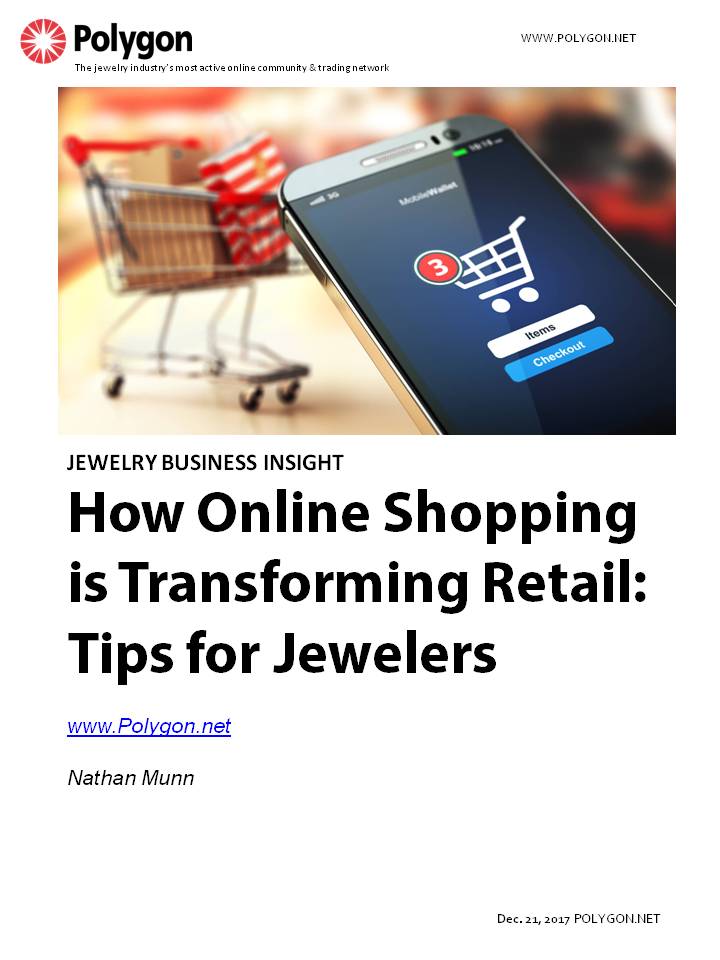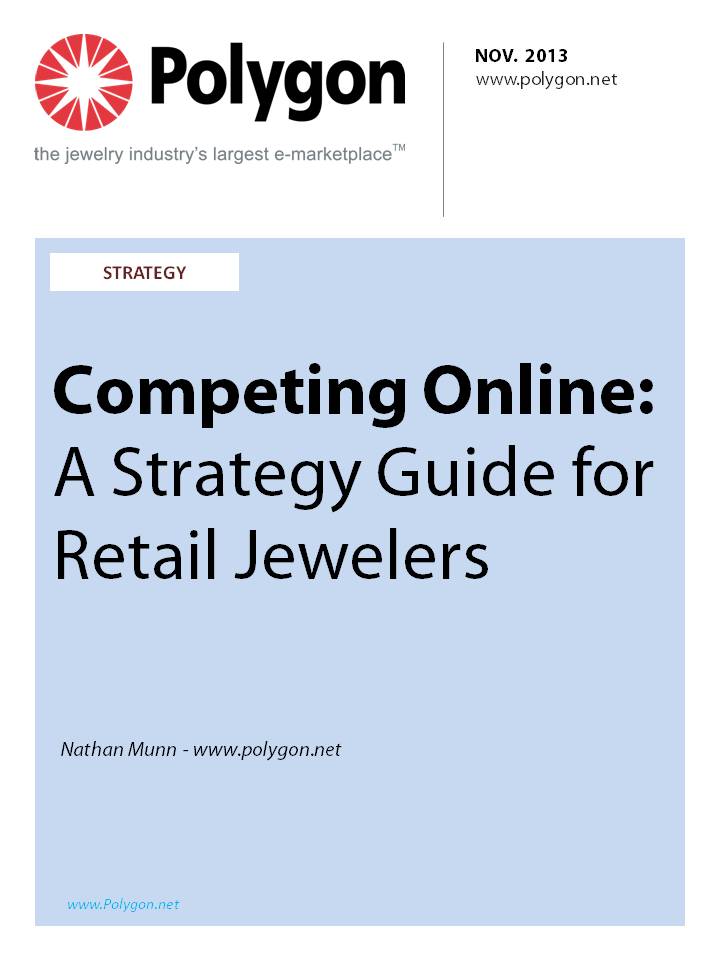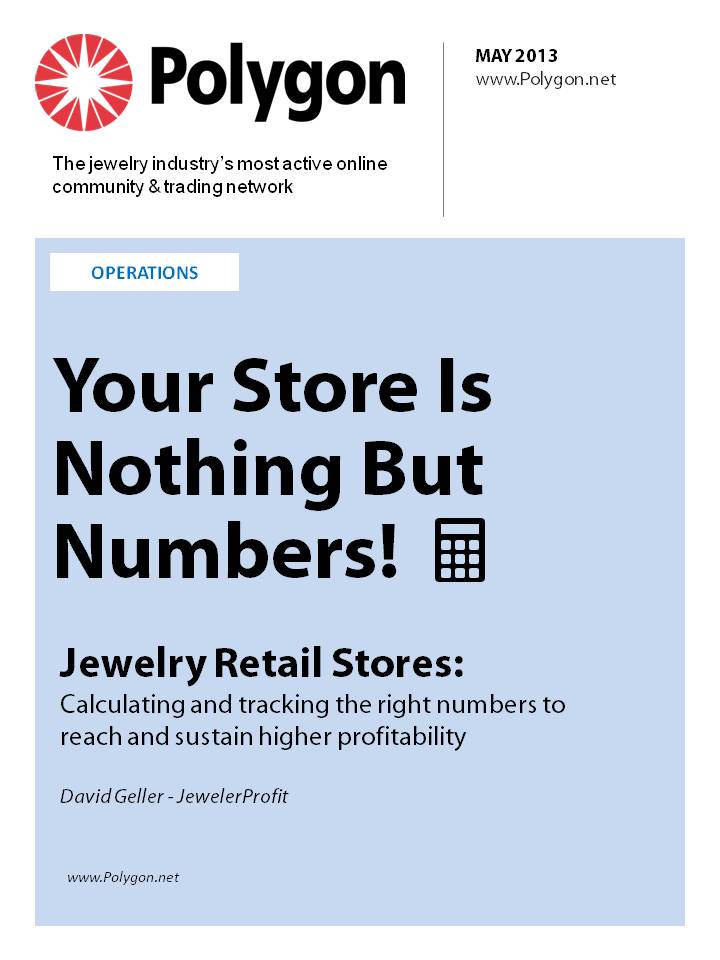How Online Shopping is Transforming Retail: Tips for Jewelers

From the rise of online retail giant Amazon, to a proliferation of new tools, apps and services meant to help brick-and-mortar retailers enter the online era, retailers can’t help but be aware that online shopping is transforming retailing as we know it. But beyond recognizing a general feeling of transformation, what are the hard numbers saying about online retail – in particular, who’s buying what and when and how they are making their purchases?
Polygon broke down the latest research from top analysts to find out what exactly is happening in the industry, and what it means for retail jewelers.
First and foremost, the percentage of online shopping done using mobile devices continues to grow. Every year, the share of retail purchases made using smartphones (and to a lesser extent, tablets) increases, and it isn’t slow growth, either: according to several studies, mobile purchases now account for 40 to 50 percent of online retail purchases for many retailers. Add to this information the fact that online sales as a whole continue to increase every year, and it becomes clear that mobile shopping is positioned to grow exponentially over the next five years.
But while mobile is expanding its market share of online sales, a recent study published by Adobe Digital Insights shows that desktop computers remain the device of choice for online shopping. After last year’s holiday season, SmartInsights also reported that desktop computers deliver the highest conversion rate – the number of website visitors that become paying customers - for online retail sites.
Hard Numbers: Desktop vs. Mobile Traffic and Revenue
Between Nov. 1 and Dec. 10 this year, smartphones drove 44 percent of traffic to online retailers and generated 25 percent of purchases while desktop drove 46 percent of traffic and accounted for 63 percent of online purchases, illustrating desktop’s dominance when it comes to converting website visitors to customers.
Tablets, meanwhile, drove 10 percent of traffic and generated 12 percent of online purchases.
Online retail sales on Thanksgiving Day 2017 jumped by 18.3 percent year-over-year to $2.79 billion. E-commerce giant Amazon said that Thanksgiving Day sales made on its platforms using mobile devices increased more than 50 percent year-over-year. The 2017 edition of Cyber Monday was the single-largest day for online retail sales in U.S. history, generating $6.59 billion. More than $2 billion of that was attributed to purchases made using mobile devices.
When it comes to the retail industry, Amazon is the elephant in the living room. The scale and reach of the company – which bought supermarket chain Whole Foods in 2017 in a bid to add food retailing to its offering – is hard to fathom: A recent PriceWaterhouseCoopers (PWC) survey of more than 24,000 shoppers across 29 countries found that 56 percent of respondents shop on Amazon.com. 45 percent of U.S. respondents said they start their online product searches on Amazon, and 32 percent say they use their smartphones or tablets to buy at least one product online every month.
What Does This Mean for Jewelers?
Retail jewelers should keep a few things in mind as they strategize on how to compete in an increasingly digital realm.
First, fine jewelry is tangible and highly valuable, meaning most people still prefer to feel it in their hands and see it with their eyes before buying. So while expanding your digital reach is essential, it should be done in a way that complements your existing presence and encourages customers to come to your brick-and-mortar store. This can be done by engaging potential customers before, and existing customers after a sale, through social media. Social platforms, especially Instagram, can be leveraged to grow your local customer base, chat with clients, engage with communities of jewelry enthusiasts and to promote special events, sales and exclusive deals. Real-world events coordinated through social media are an especially popular and effective way of growing your customer base.
Second, today’s younger customers are more likely to see precious gems as investments, not as luxury items. This is an important distinction to make when developing your marketing strategy and a topic I wrote about in a recent piece for Polygon.
Third, having an omni-channel sales strategy is just good business sense. Your product offering must be as accessible online as it is when someone walks into your physical store. This may mean you have to invest in hiring a marketing manager who can ensure that your products are available across digital platforms, develop partnerships to expand your digital reach, and manage in-house upgrades to your offering, such as a virtual inventory product. Marketing initiatives that connect you with your local community, such as holiday events, are also proven drivers of engagement.
Nathan Munn | Polygon.net







